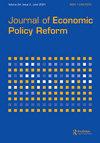社论:公私合作的未解决性质
IF 3.2
3区 经济学
Q1 DEVELOPMENT STUDIES
引用次数: 0
摘要
在过去的三十年里,公私合作伙伴关系(ppp)作为交付大型复杂基础设施项目的首选方式席卷全球。在全球范围内,数万亿美元的基础设施是通过公私合作伙伴关系提供的,这种合作关系将基础设施的设计、建设、融资、运营和维护结合到一个单一的特许合同中。使用公私合作伙伴关系的理由因司法管辖区而异,并随着时间的推移而演变,但总的来说,可以分为两个全球浪潮。在上世纪90年代初至本世纪头十年中期的第一波ppp热潮中,资金紧张的政府希望通过私人资金为急需的基础设施提供资金,这种方式将不计入资产负债表,因此不计入公共债务。在这一时期,围绕公私合作的讨论也是高度意识形态化的,支持者将其定义为一种赋予市场驱动的私营部门权力的方式,这种私营部门本质上比政府更有效率,而且它们经常依赖工会劳工。经过多年激烈的意识形态之争,2000年代中期出现了第二波ppp,这波ppp更具体地受到技术目标的推动。公私伙伴关系被广泛地重新命名为一种物有所值的方法。尤其重要的是,希望将大型项目的风险从政府转移出去,因为私营部门在这些项目上经常出现成本超支、延误和维护不善的情况。公私伙伴关系被提议作为绩效合同的报酬,将锁定资金来支付长期设施维护,这是政府在闪亮的大型项目开放后经常逃避的领域。此外,刺激私营部门主导的创新成为公私合作伙伴关系的一个重要目标,这将降低成本并提高用户的收益。随着数万亿美元的基础设施通过PPP模式交付,PPP已经成为一个深入研究的对象。多年来,人们撰写了数百篇,甚至更可能是数千篇学术论文和十几本书籍,研究公私合作的各个方面:工程、法律、会计、金融、城市规划、公共管理、政治学和经济学。通过这一跨学科的文献,现在人们普遍认识到,公私合作伙伴关系既是项目交付的技术方法,也是治国方术的政治工具。然而,尽管几十年来通过公私伙伴关系投资了大量基础设施资金,也进行了大量的研究,但一些基本的、根本的问题在很大程度上仍未得到解答。公私合作是否物有所值(如果这个概念可以定义的话)?公私伙伴关系是否有效地刺激创新和转移风险?它们是否比其他采购方法提供更好的结果?从PPP来看,谁赢谁输?公私伙伴关系在多大程度上是一种语言游戏,旨在重塑努力,扩大私营部门在日常生活中的作用?《经济政策改革研究2022》第25卷第1期。2,81 - 84 https://doi.org/10.1080/17487870.2022.2080408本文章由计算机程序翻译,如有差异,请以英文原文为准。
Editorial: The Unresolved Nature of Public-Private Partnerships
Over the past three decades, public-private partnerships (PPPs) have swept the world as the preferred approach to deliver large, complex infrastructure projects. Globally, trillions of dollars of infrastructure have been provided through PPPs that bundle some combination of infrastructure design, construction, financing, operations and maintenance into a single concession contract. The rationale for using PPPs has varied by jurisdiction and evolved over time, but in general can be grouped into two global waves. In the first wave between the early 1990s and the mid 2000s, PPPs were motivated by cash strapped governments looking to fund much needed infrastructure through private money, in a way that would be off balance sheet and therefore not count as part of the public debt. The discourse around PPPs during this period was also highly ideological, framed by proponents as a way to empower the market-driven private sector that was inherently more efficient than government and their frequent reliance on unionized labour. After years of pitched ideological battles, a second wave of PPPs emerged in the mid 2000s that were more specifically motivated by technical objectives. PPPs were widely rebranded as an approach to deliver value for money. Particularly important was a desire to transfer major project risks from government where cost overruns, delays and poor maintenance were all too common to the private sector. PPPs were proposed as pay for performance contracts that would lock-in funding to pay for long-term facility maintenance, an area that governments often shirk after shiny mega-projects open. Additionally, spurring private sector led innovation became an important goal for PPPs that would lower costs and improve the benefits for users. Alongside trillions of dollars of infrastructure delivered through PPP models, PPPs have become an object of intense study. Over the years, hundreds, and more likely thousands of academic papers and more than a dozen books have been written examining all aspects of PPPs: engineering, legal, accounting, finance, urban planning, public administration, political science, and economics. Through this interdisciplinary body of literature, it is now widely recognized that PPPs are both a technical approach to project delivery and a political tool for statecraft. Nevertheless, despite all the infrastructure money invested through PPPs over decades and the intense research attention, some basic, fundamental questions remain largely unanswered. Do PPPs deliver value for money (if the concept can even be defined)? Do PPPs effectively spur innovation and transfer risk? Do they provide better outcomes than alternative procurement approaches? Who wins and who loses from PPP? To what extent are PPPs a language game designed to rebrand efforts to expand the role of the private sector into everyday life? JOURNAL OF ECONOMIC POLICY REFORM 2022, VOL. 25, NO. 2, 81–84 https://doi.org/10.1080/17487870.2022.2080408
求助全文
通过发布文献求助,成功后即可免费获取论文全文。
去求助
来源期刊

Journal of Economic Policy Reform
Multiple-
CiteScore
6.60
自引率
0.00%
发文量
14
期刊介绍:
The Journal of Economic Policy Reform focuses on the analysis of economic policy reform. The journal draws upon what lessons can be learned from the successes and failures of countries undertaking reforms and how existing theories can be developed to shed light on positive as well as normative aspects of the reform process. The Journal of Economic Policy Reform encourages work from economists and political economy analysts on policies to promote growth and reduce poverty, intellectual property rights, aid versus trade, debt and debt relief, taxation and social security systems, surveys of key reform issues, as well as on corruption, democracy, emerging markets and the role of multilateral institutions.
 求助内容:
求助内容: 应助结果提醒方式:
应助结果提醒方式:


